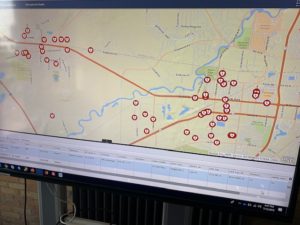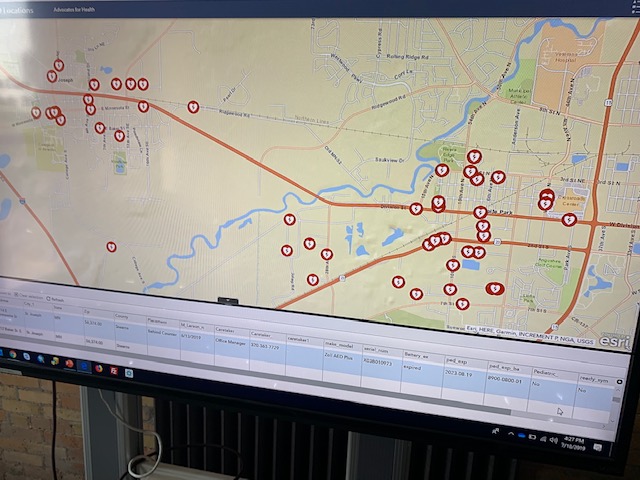by Dennis Dalman
news@thenewsleaders.com
Time is of the essence, and that is seldom truer than in the case of a person experiencing sudden cardiac arrest.
That is why the Stearns County Sheriff’s Department and its sheriff, Steve Soyka, saw the need to quicken response times for those who collapse during SCA (sudden cardiac arrest).
Throughout Central Minnesota – especially in the cities of St. Joseph, Sartell and St. Cloud – there is an ever-increasing number of SaveStations – a current total of 481 of them. The stations are setups that house automated external defibrillators – machines that can “shock” a stopped heart back to life with just a pad applied to the victim’s chest and the push of a button.
The Stearns County 911 emergency system can now instantly alert off-duty first responders, citizen volunteers and Good Samaritans to the nearest location of any SaveStation. Rich Feneis of Sartell, who helped start the SaveStation effort locally, explained why the new notification system is such a good thing. Generally, a SCA victim has only a time frame of three to five minutes for someone to help the heart start beating again. The average response time for professional response teams to medical emergencies in Central Minnesota is from 12-15 minutes, Feneis noted. That time gap can now be bridged with the new notification system, giving a far better chance for a victim to be helped by cardiopulmonary resuscitation and use of an AED in the precious minutes before professional response teams (law enforcement, first responders, ambulance crew, etc.) can arrive at the scene.
Two years ago, Feneis founded (with the help of Joel Vogel of St. Joseph) a group called Advocates for Health dedicated to increasing the number of SaveStations and a public education program to show people of all ages how to use the AEDs at the stations. Since then, a partnership was formed with grants from the CentraCare Health Foundation, law enforcement, volunteers, fundraisers and Advocates for Health.
Last year, Advocates for Health implemented a program to locate all AEDs in Central Minnesota (in buildings and at SaveStations) to make sure they all work. Some (about 20 percent of the 481 machines) did not work, needing fresh batteries and/or new chest pads. Those were all restored to working order. Then, Advocates worked with GeoComm, a St. Cloud-based engineering and mapping company that sets up 911 systems nationwide. GeoComm downloaded all information provided by Advocates for Health and created a map for Stearns County 911 Dispatch. That is how dispatchers can instantly notify people as to where to find the nearest SaveStation when a SCA crisis occurs.
Feneis said SCA is a leading cause of death in the United States, killing 350,000 people each year. Survival rate is only five percent among its victims. However, with AED intervention, the survival rate is as high as 75 percent – thus, as Feneis noted, the need for quick access to AEDs in every area of the county.

This is a SaveStation map used by 911 dispatchers to send neighborhood helpers to the nearest SaveStations in their areas. The new system helps bridge the gap in time after somebody suffers a sudden cardiac arrest. Each SaveStation houses an automatic external defibrillator, a machine that can “shock” a heart back into action.



